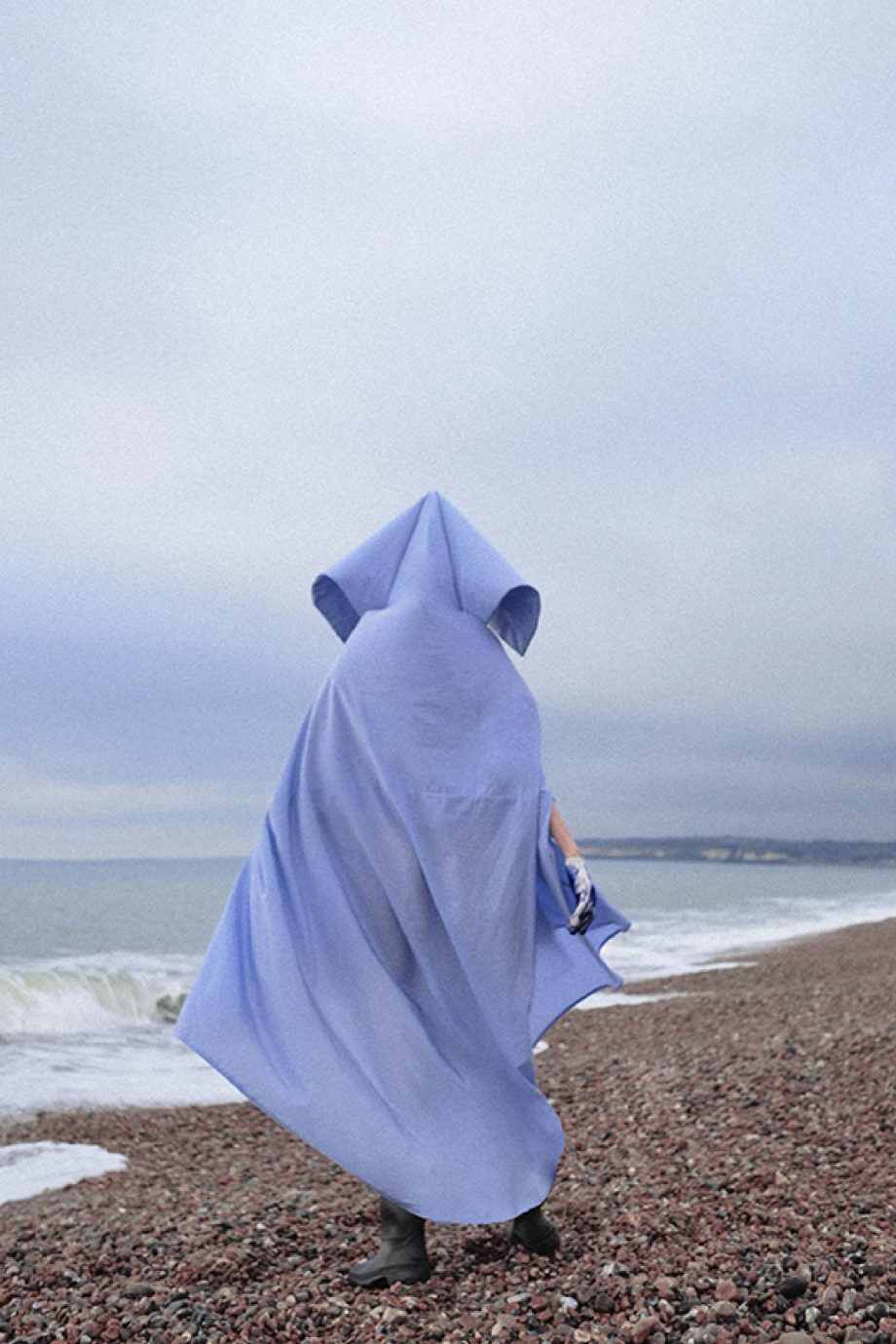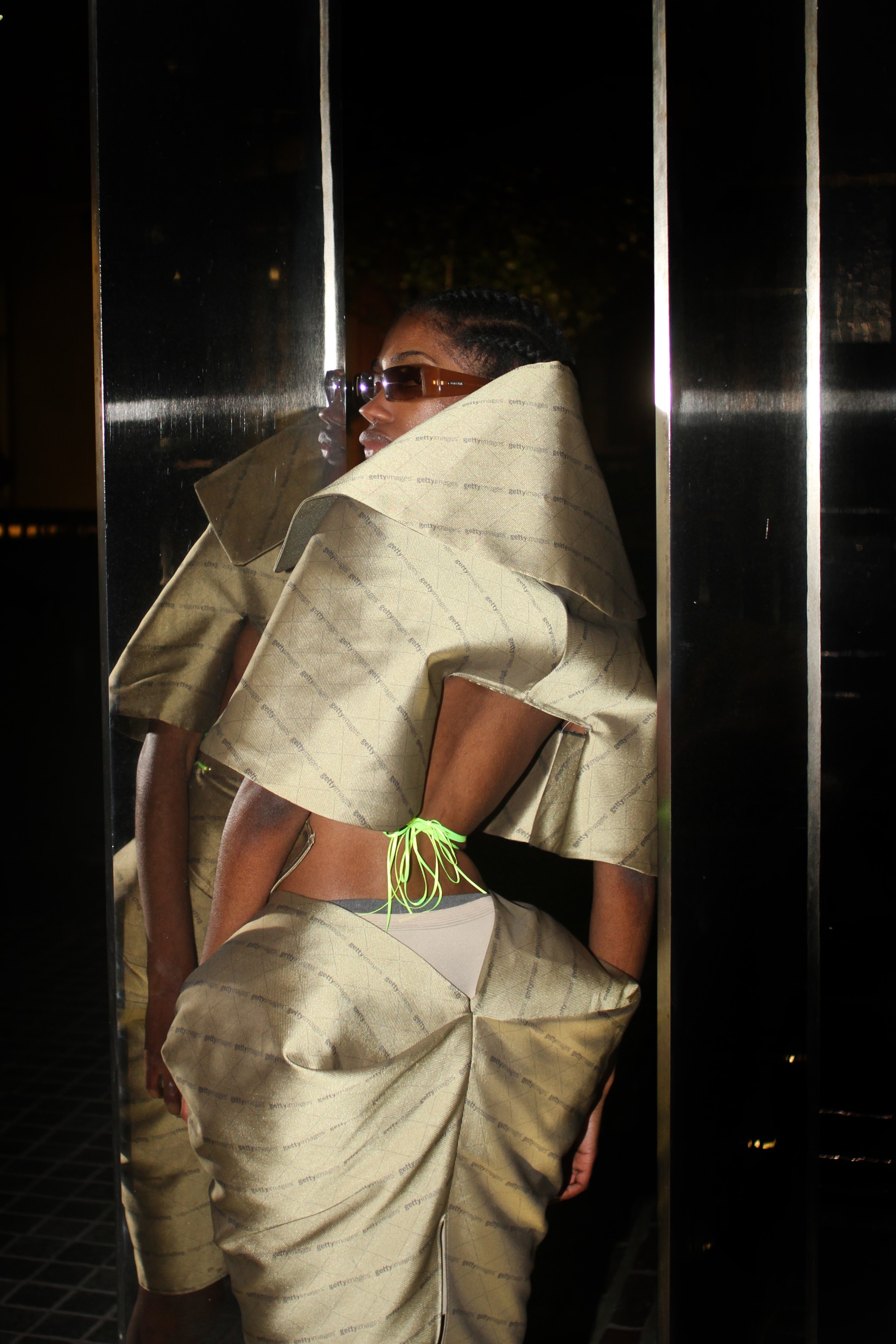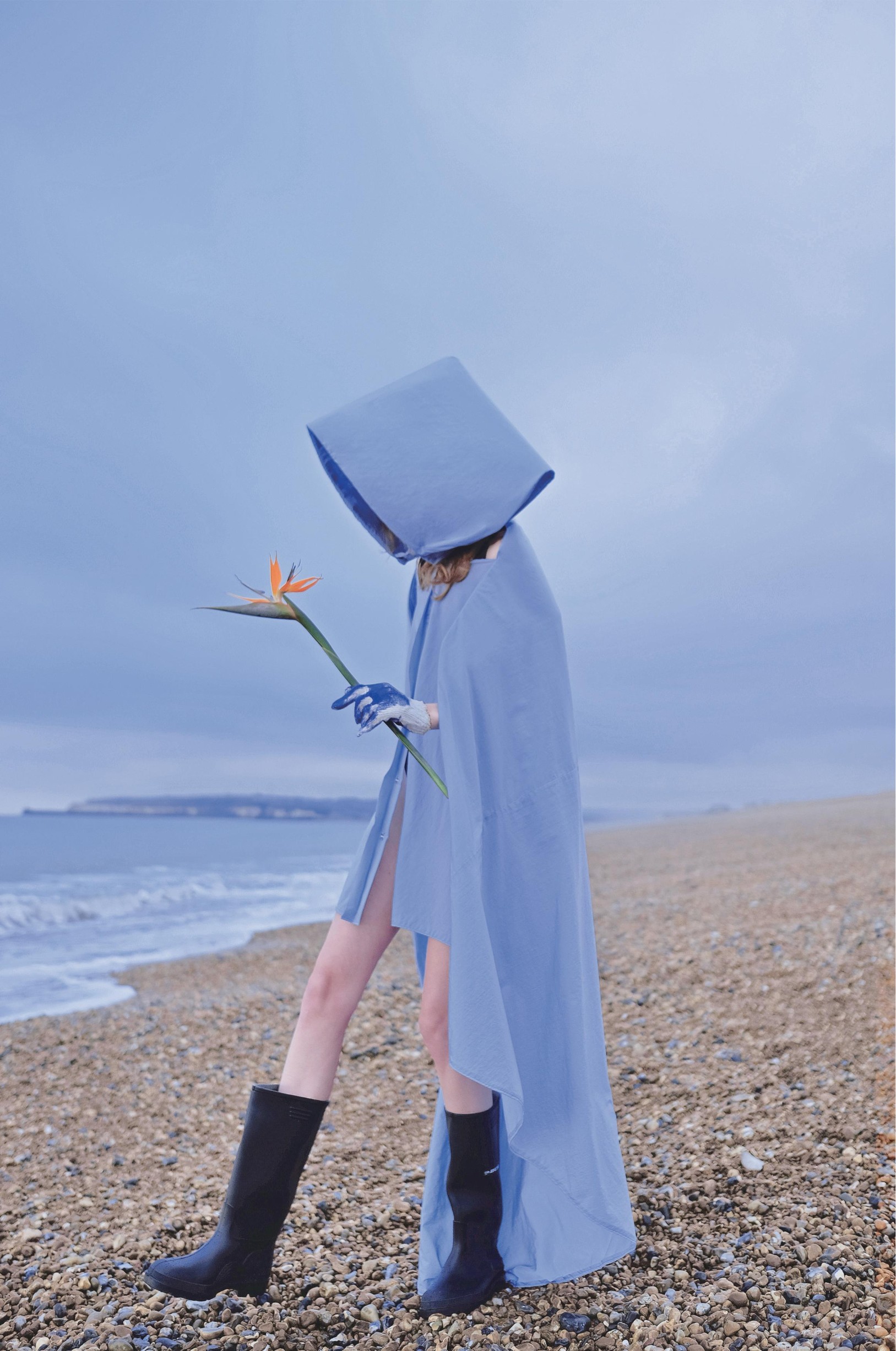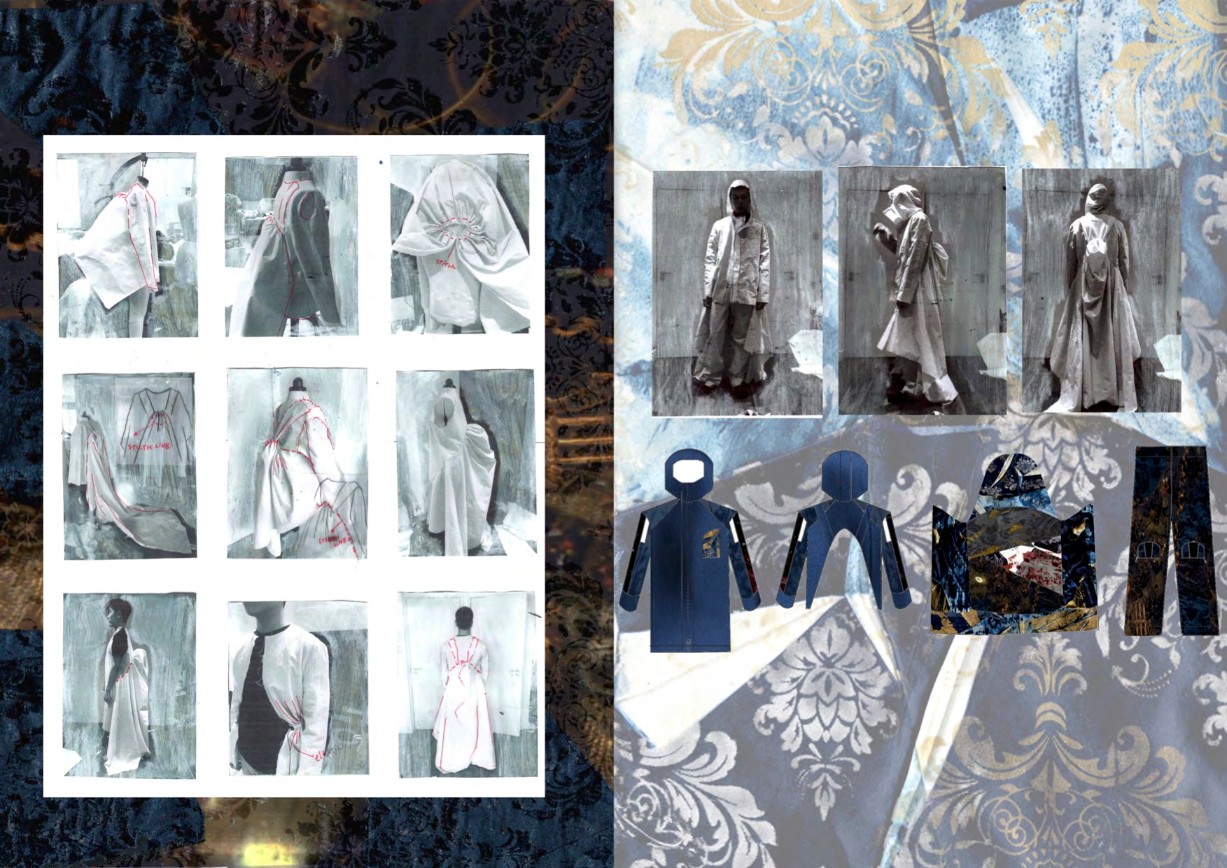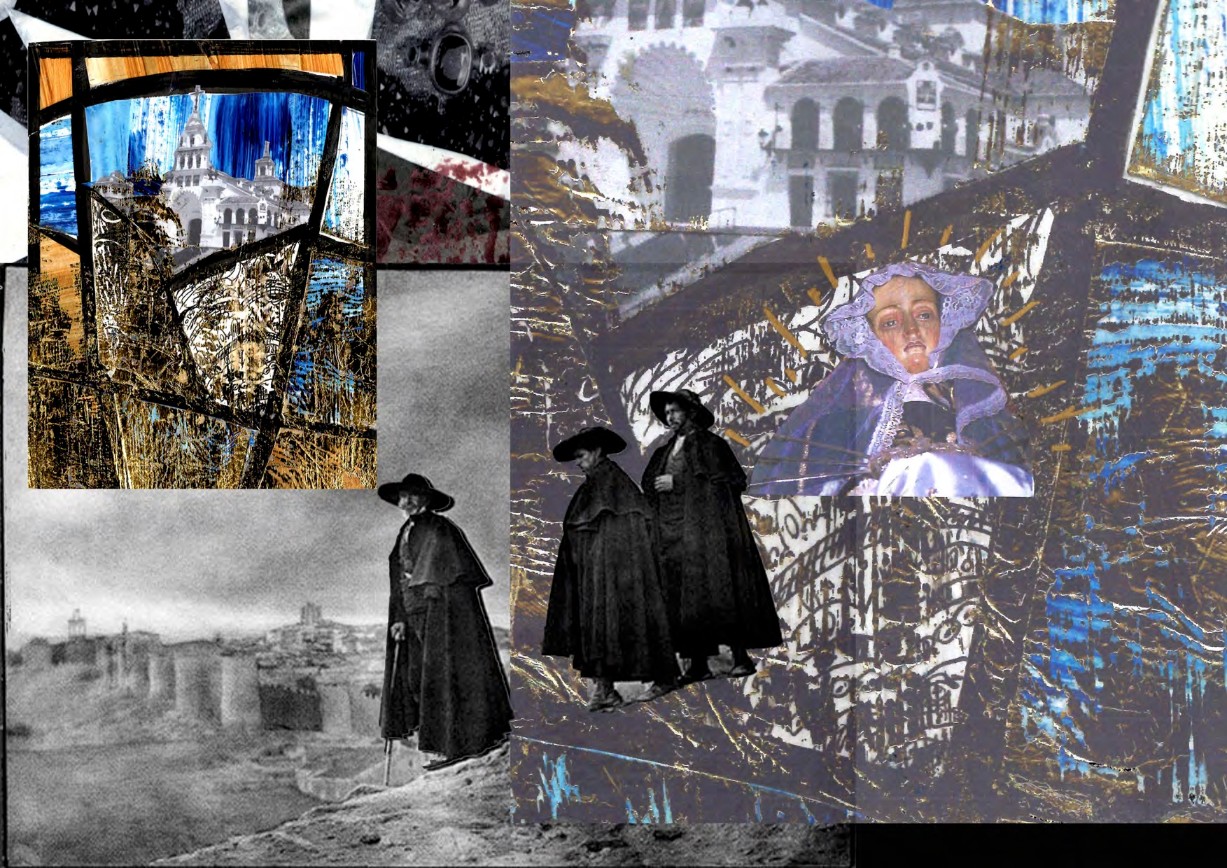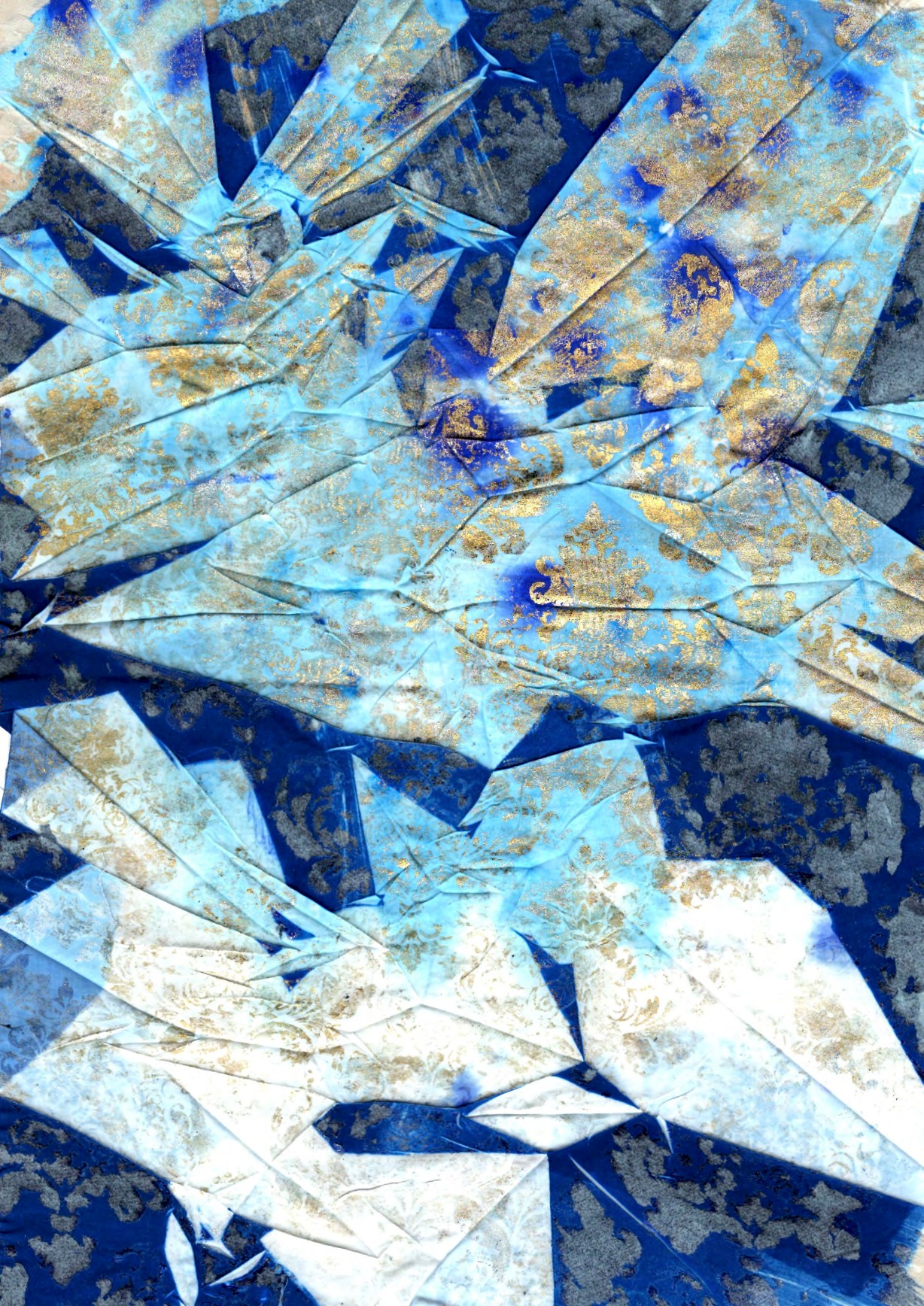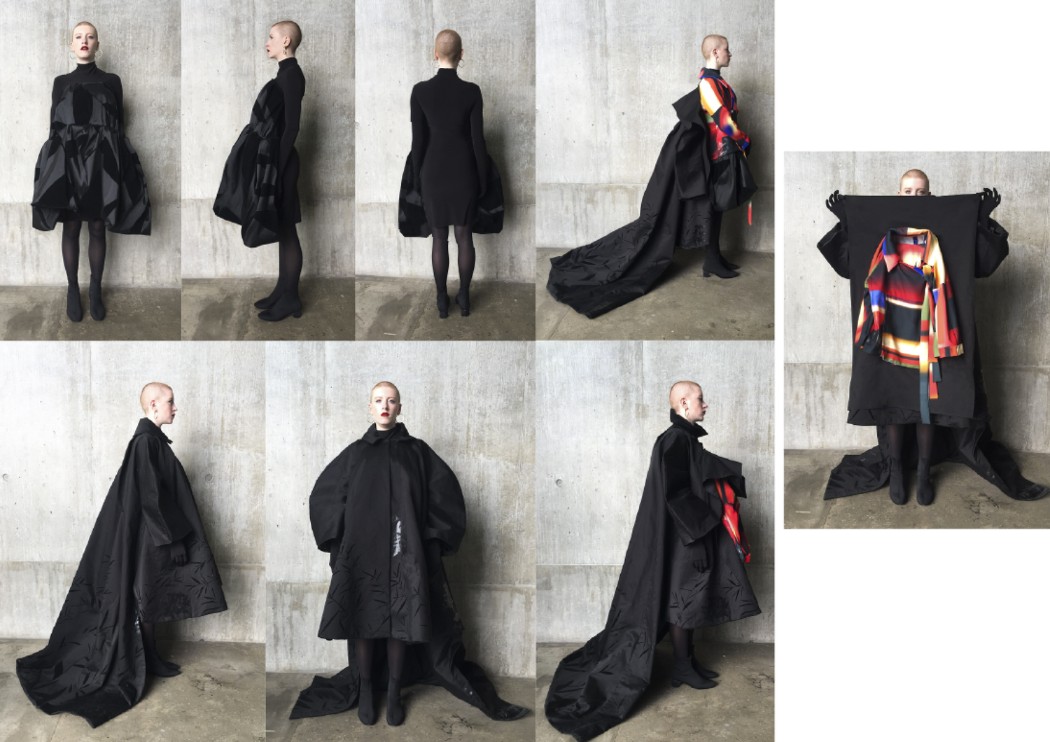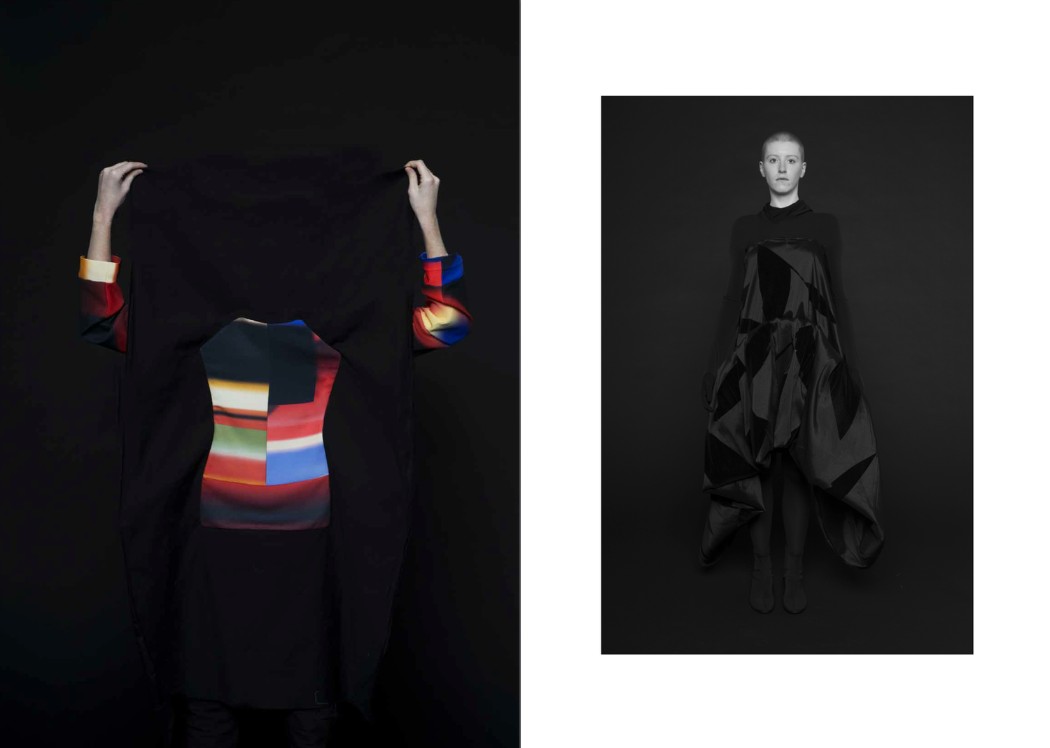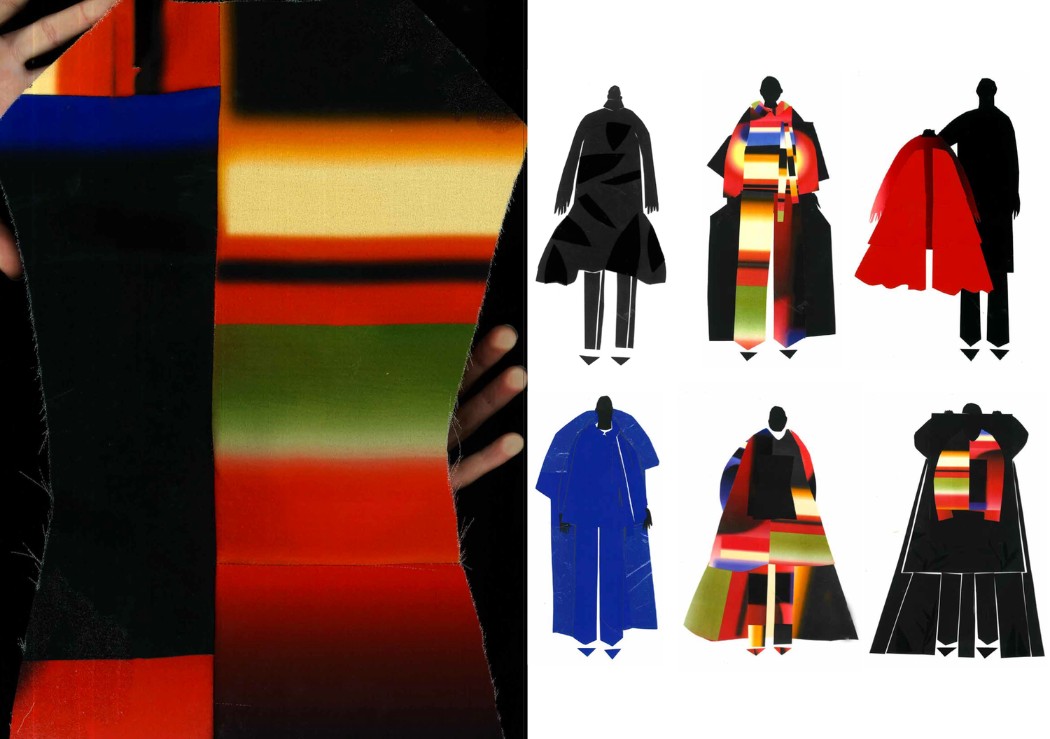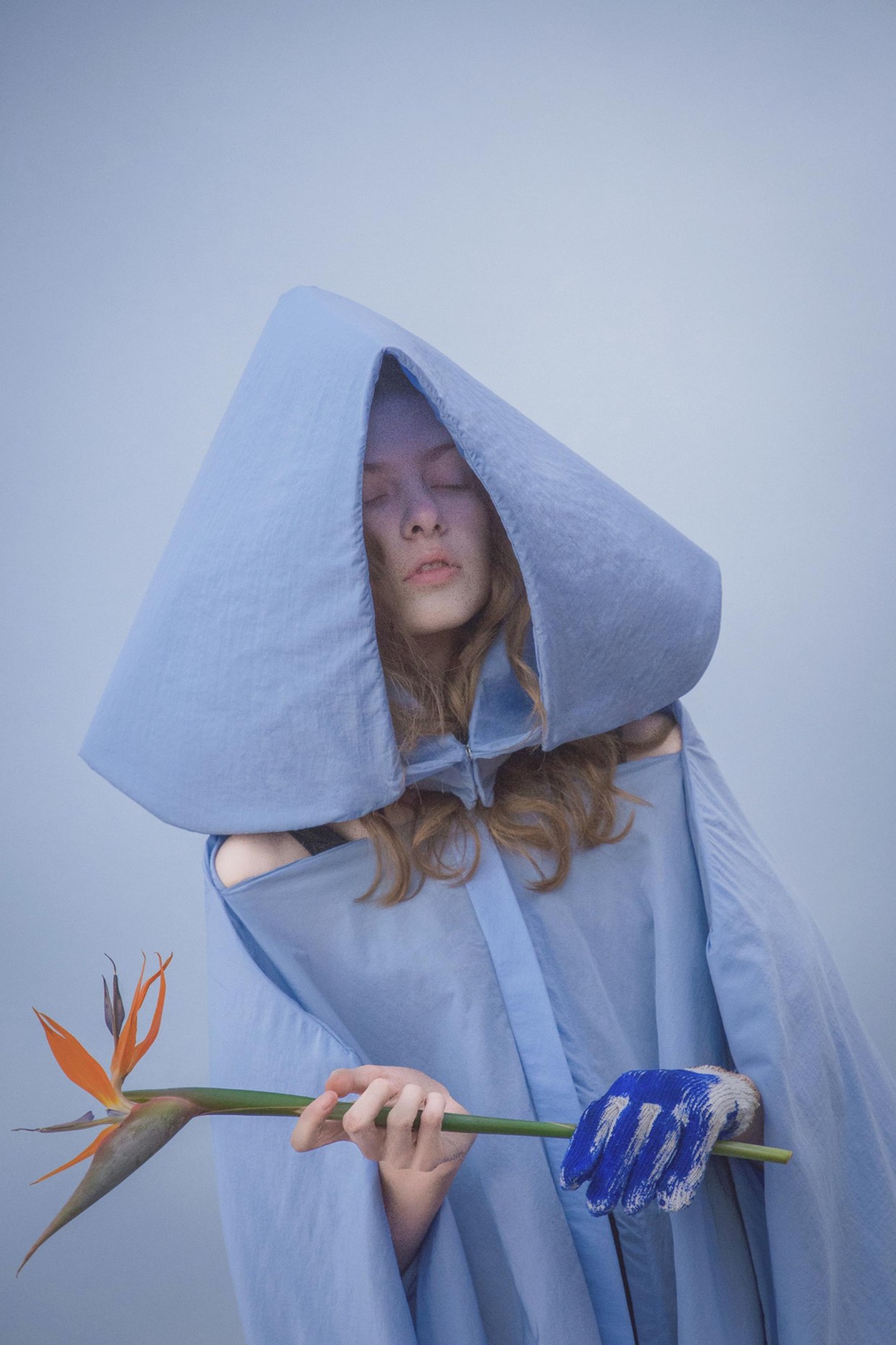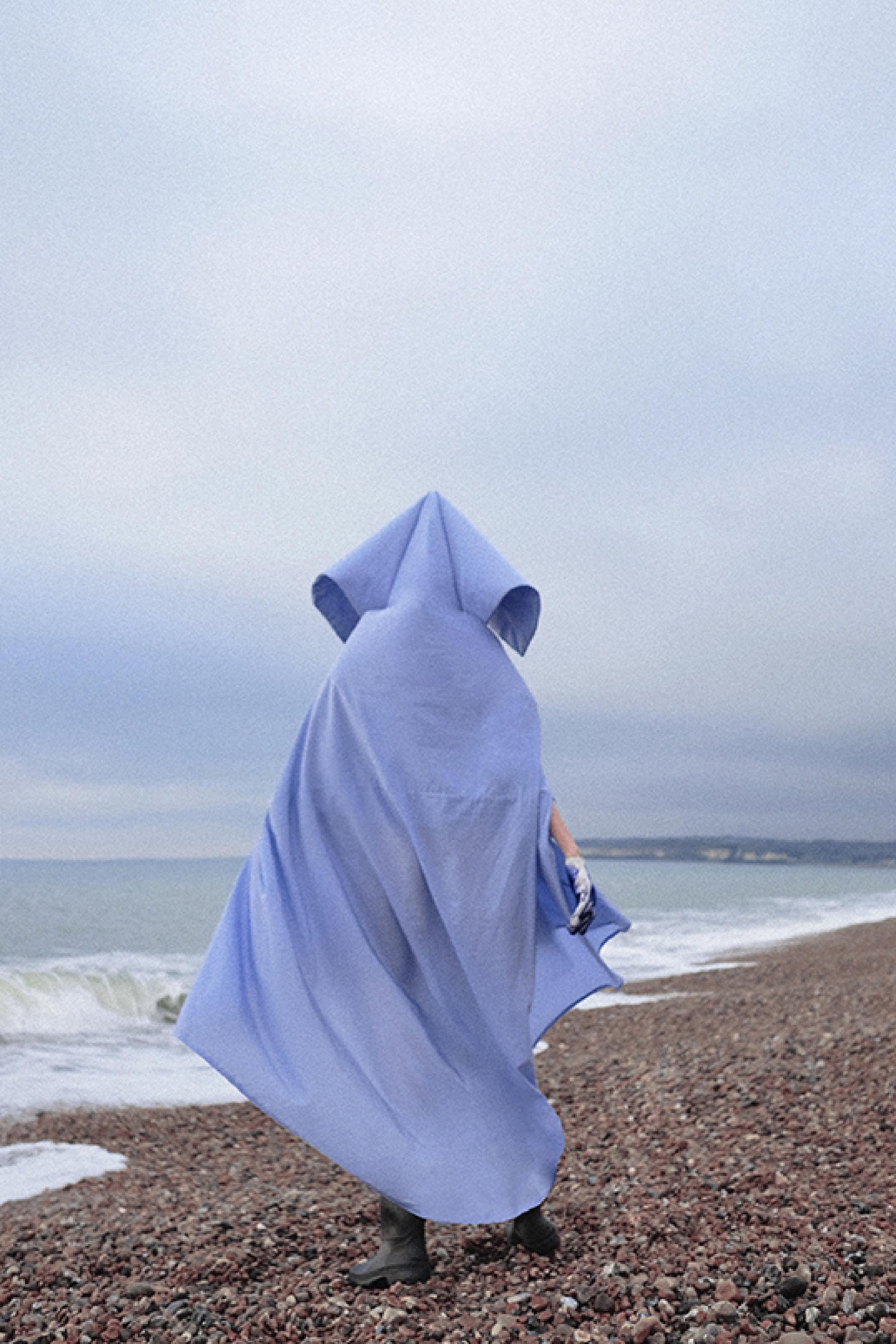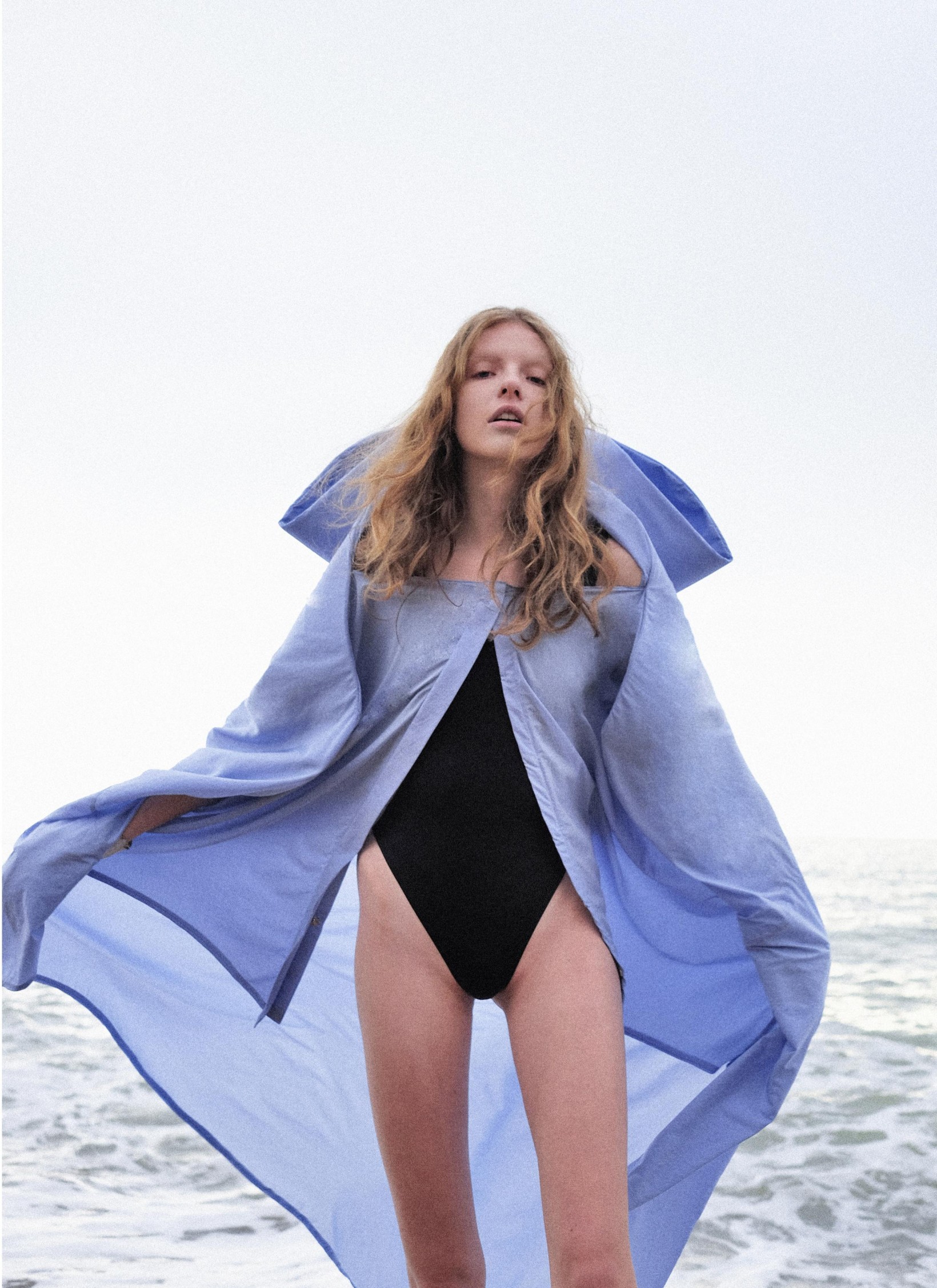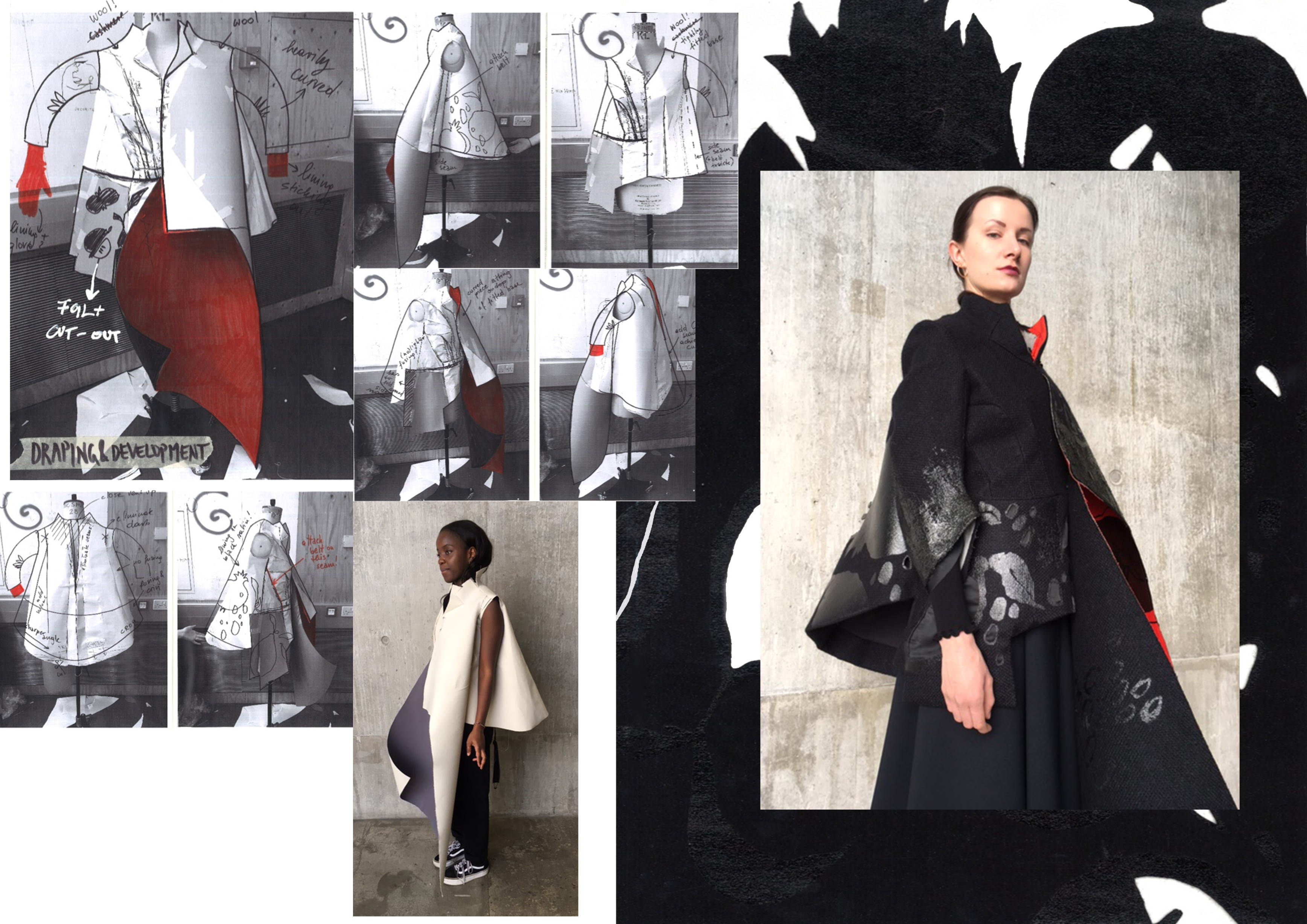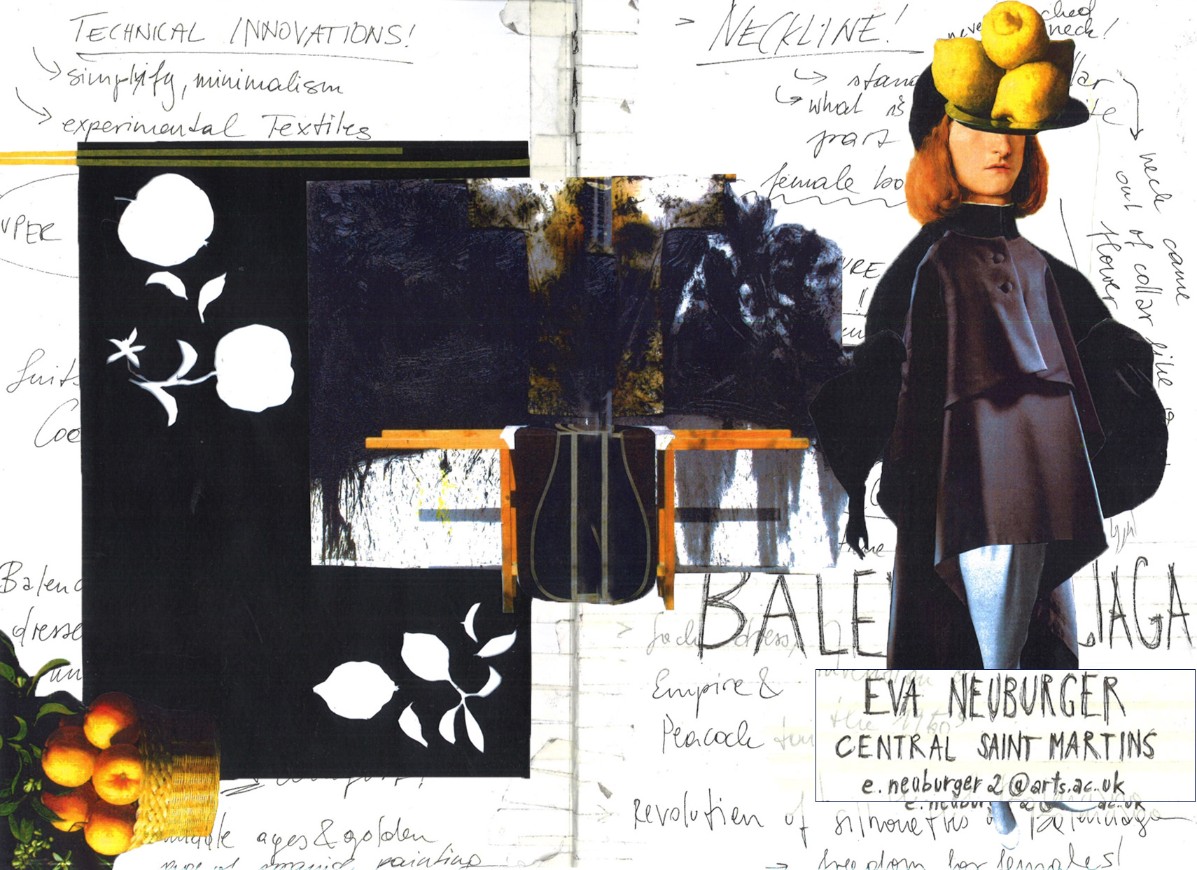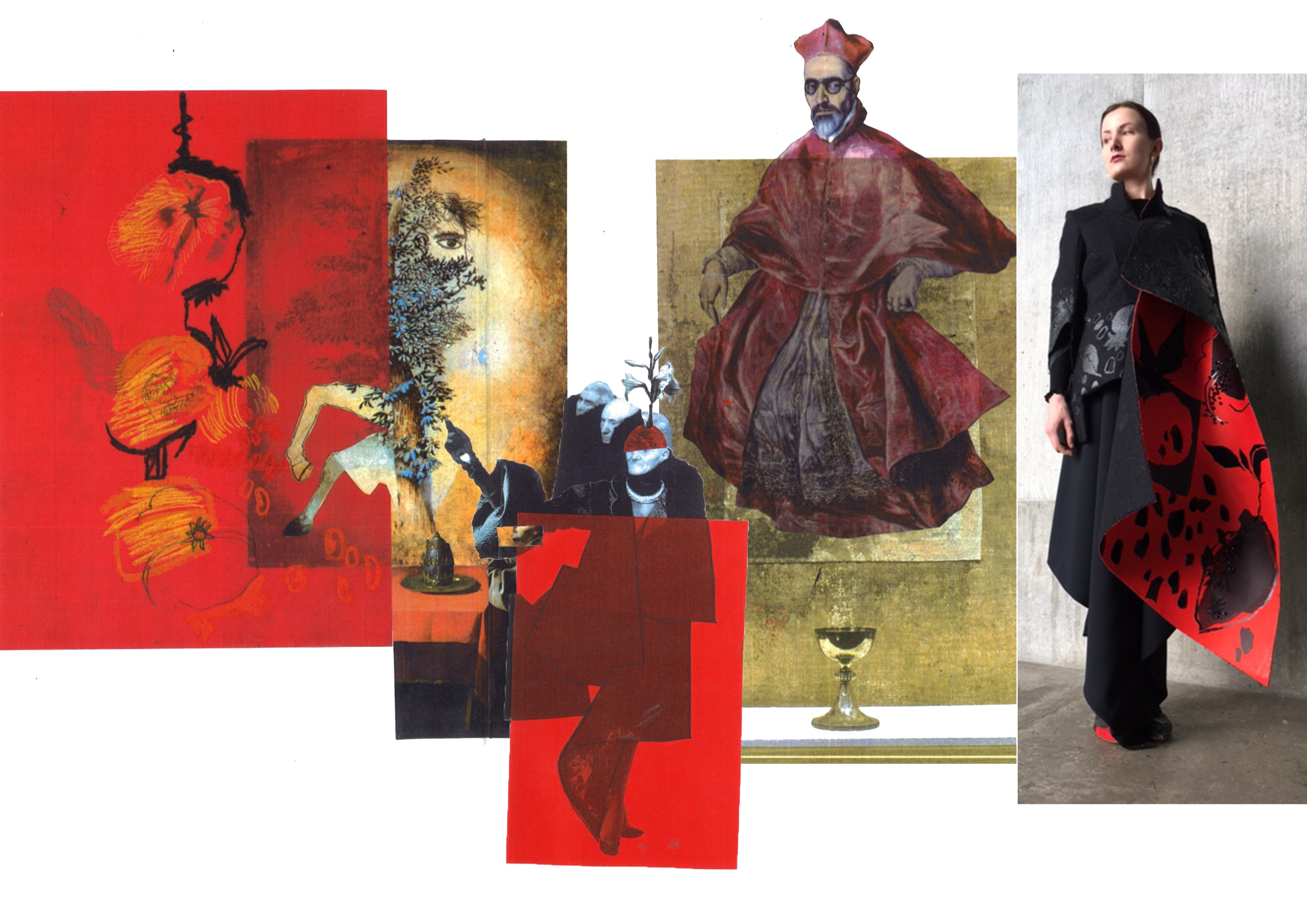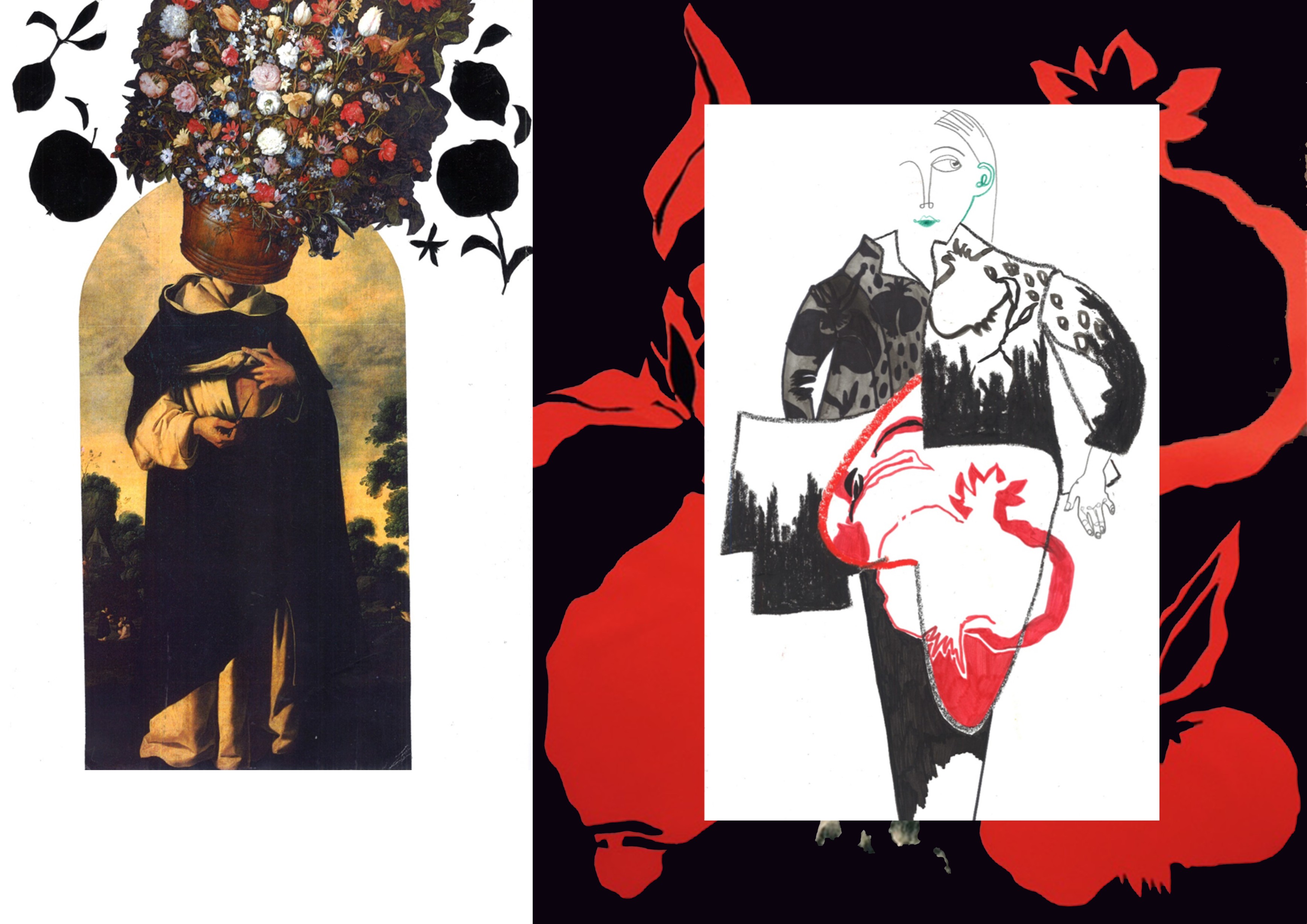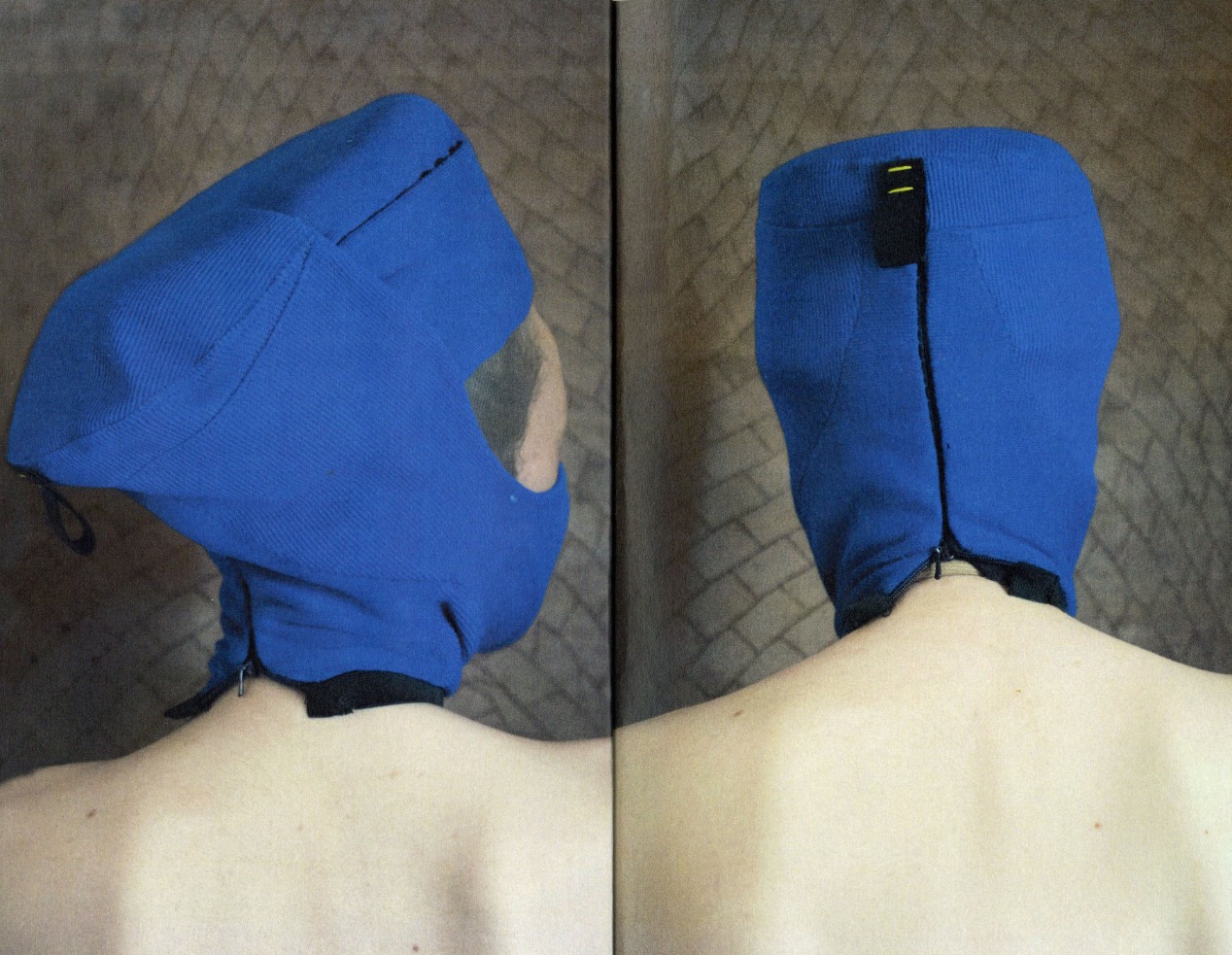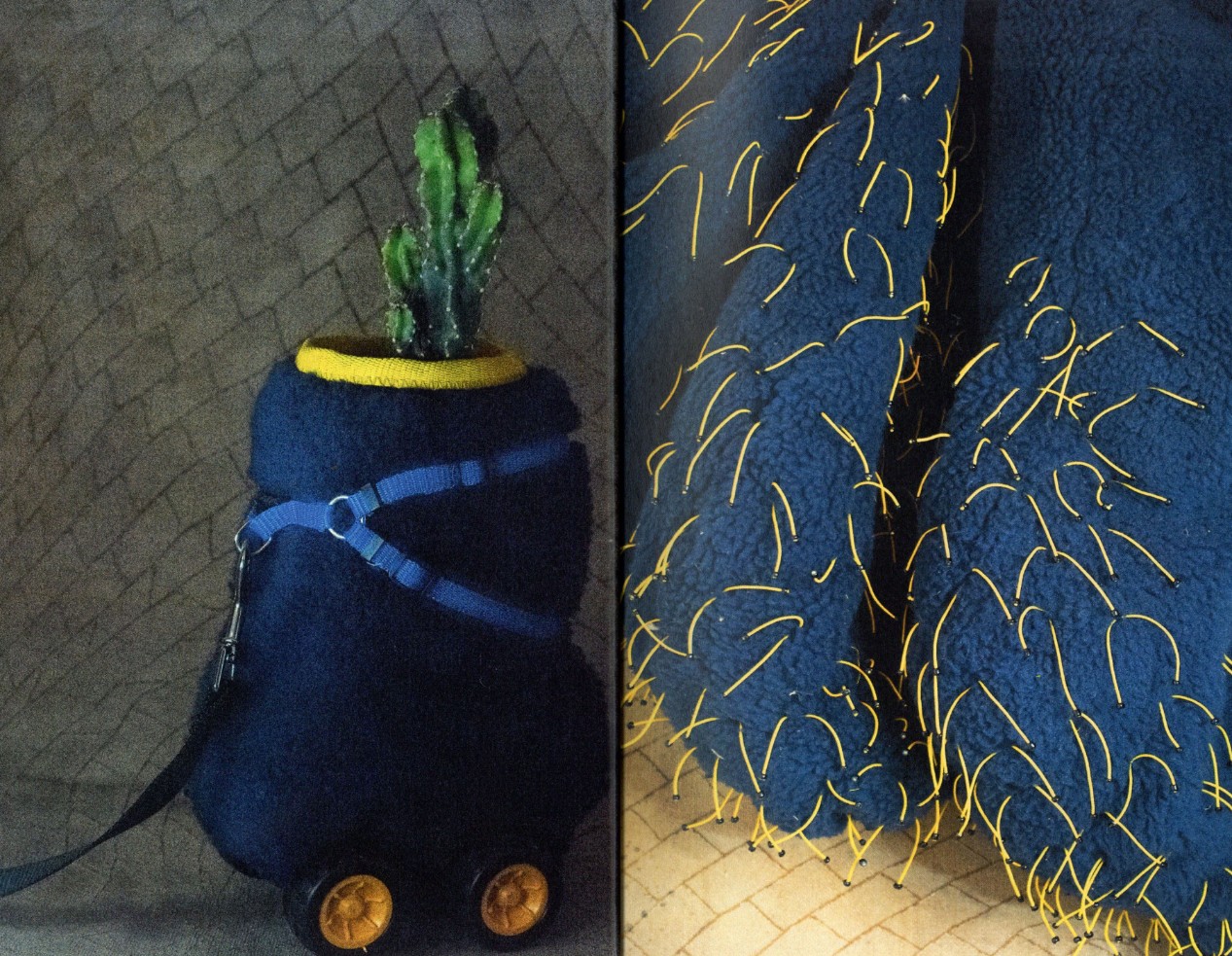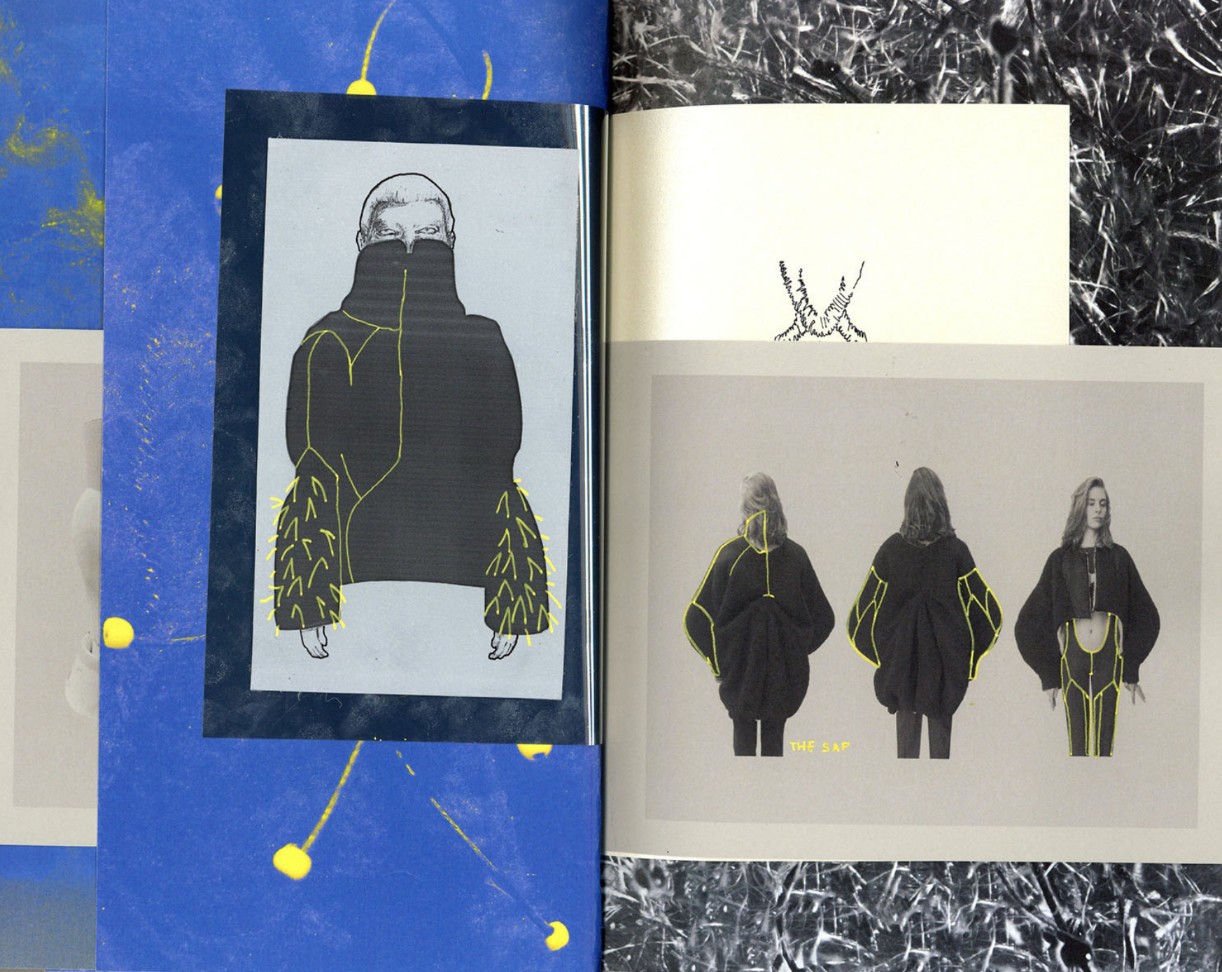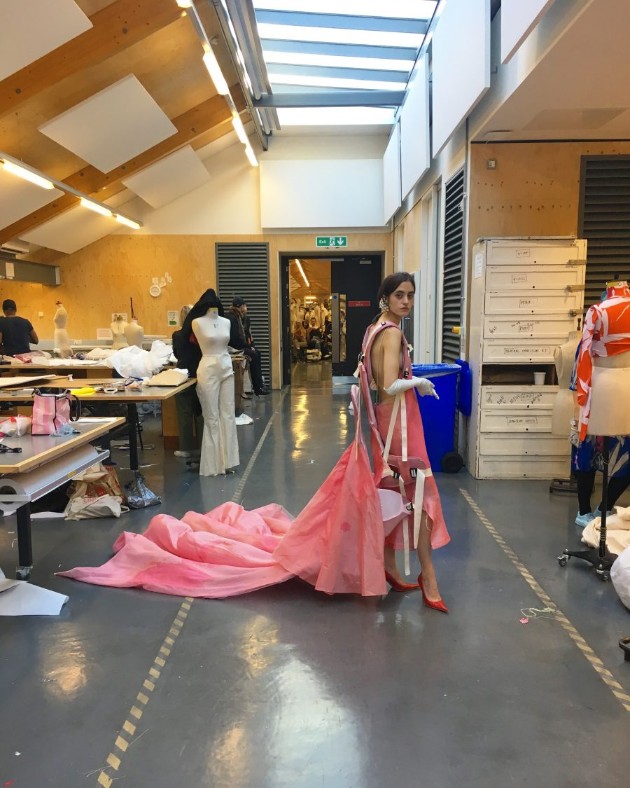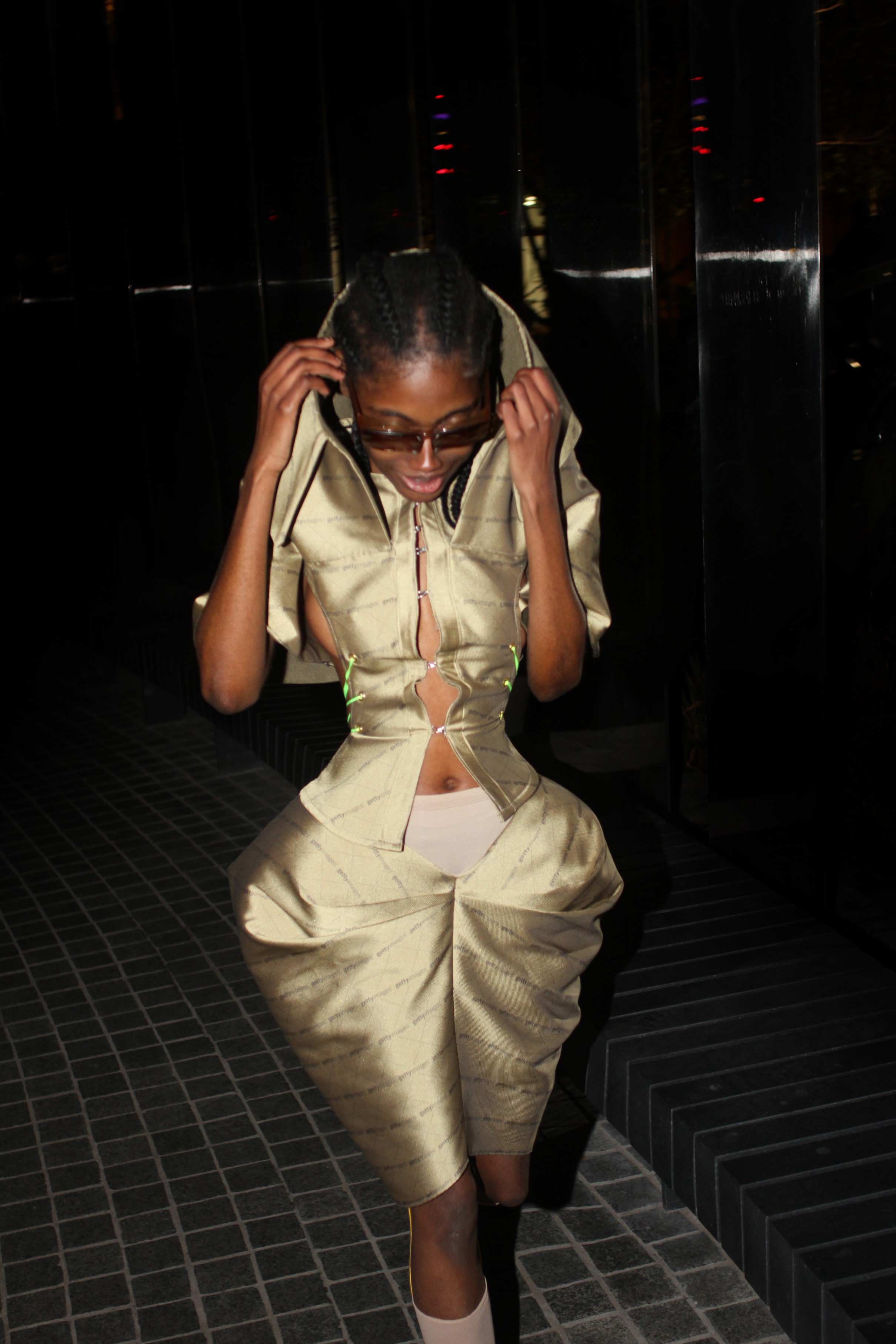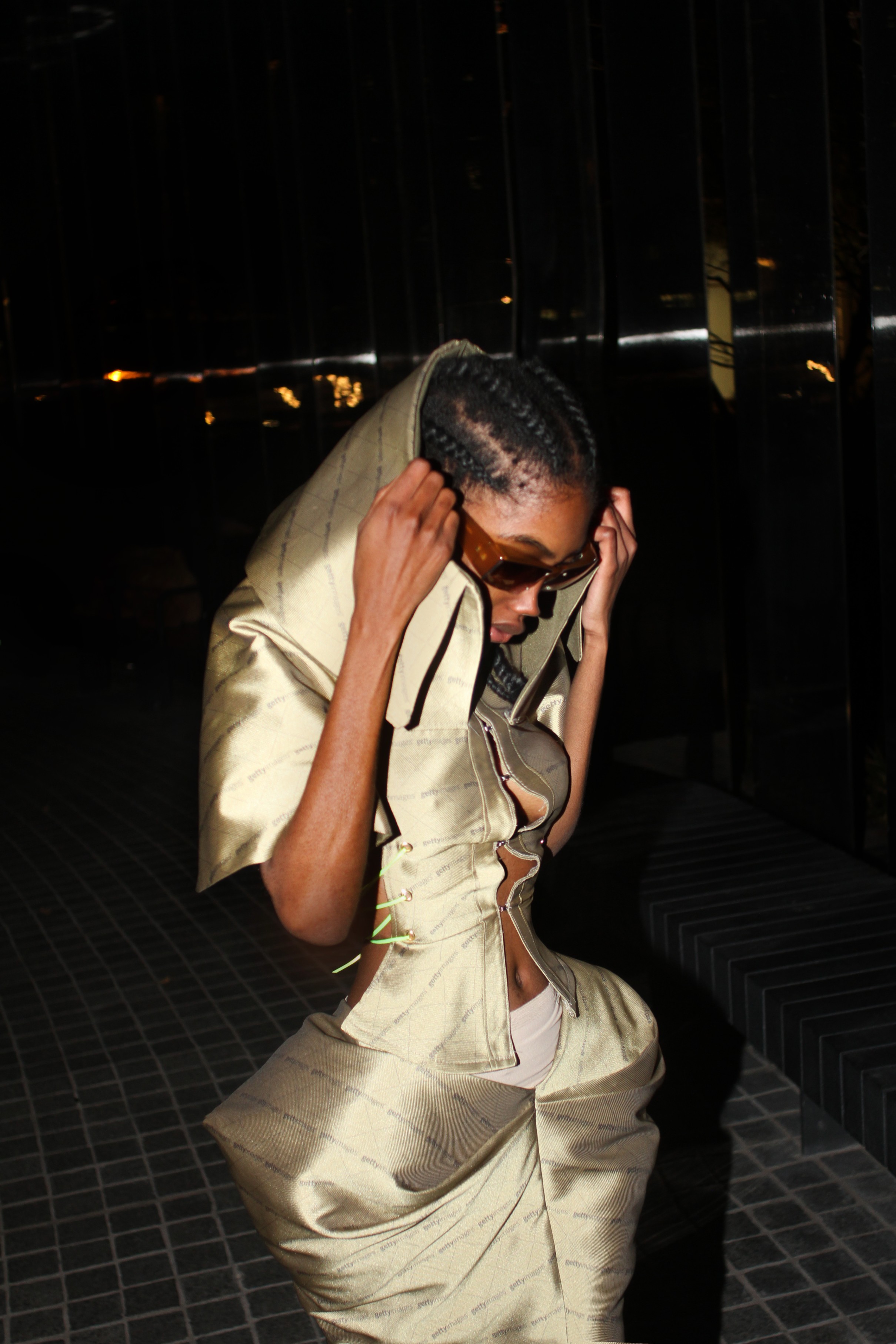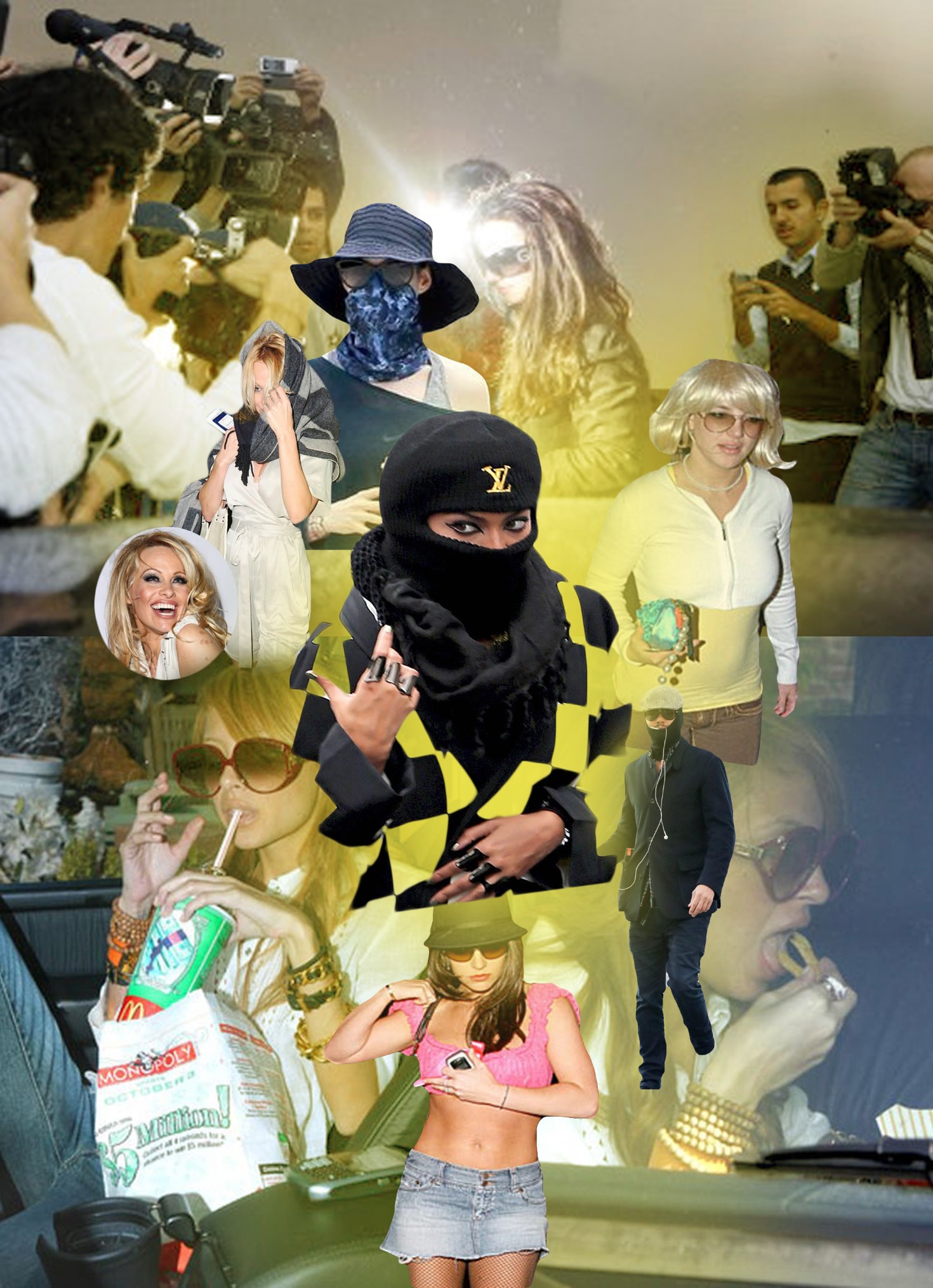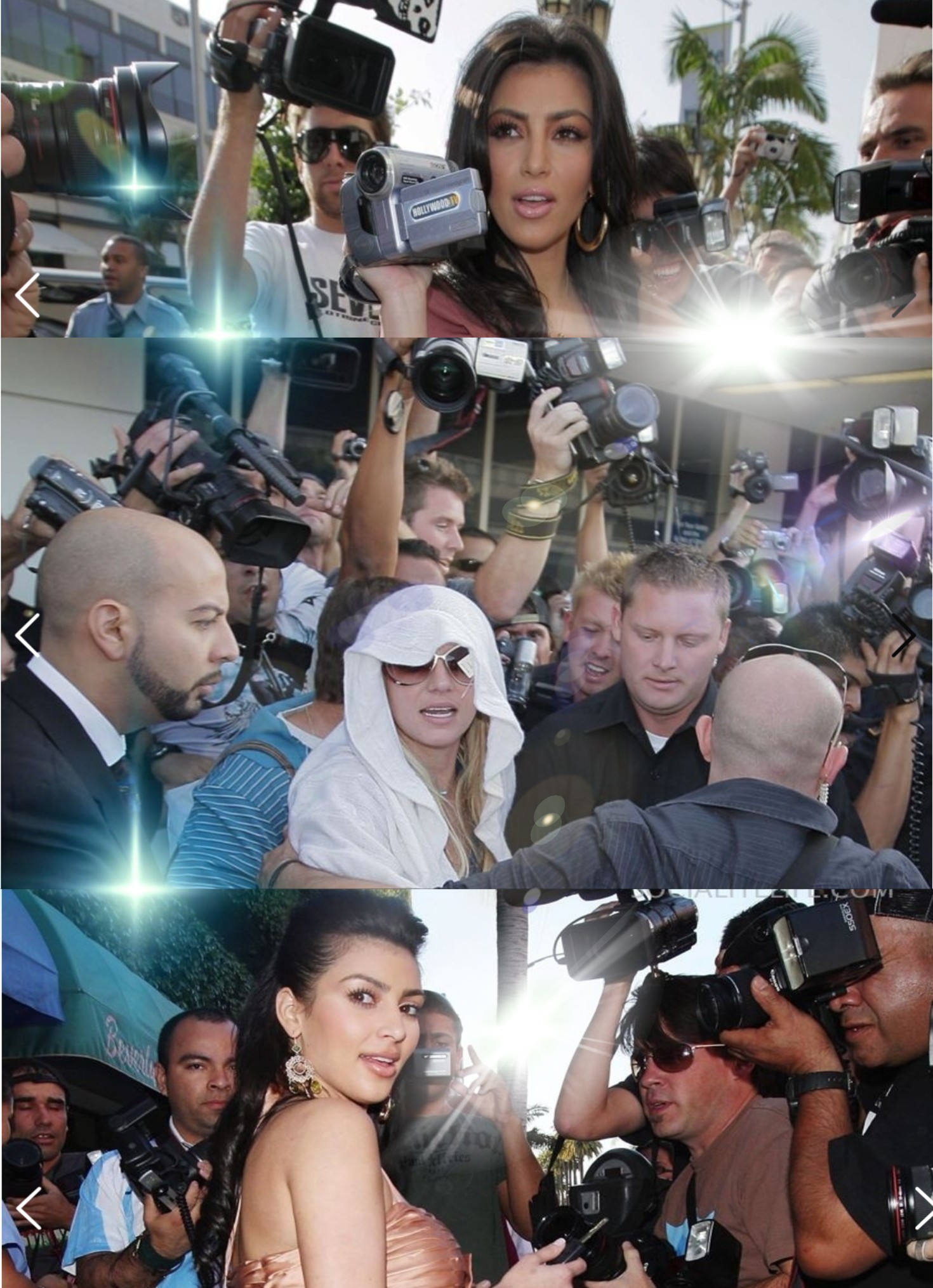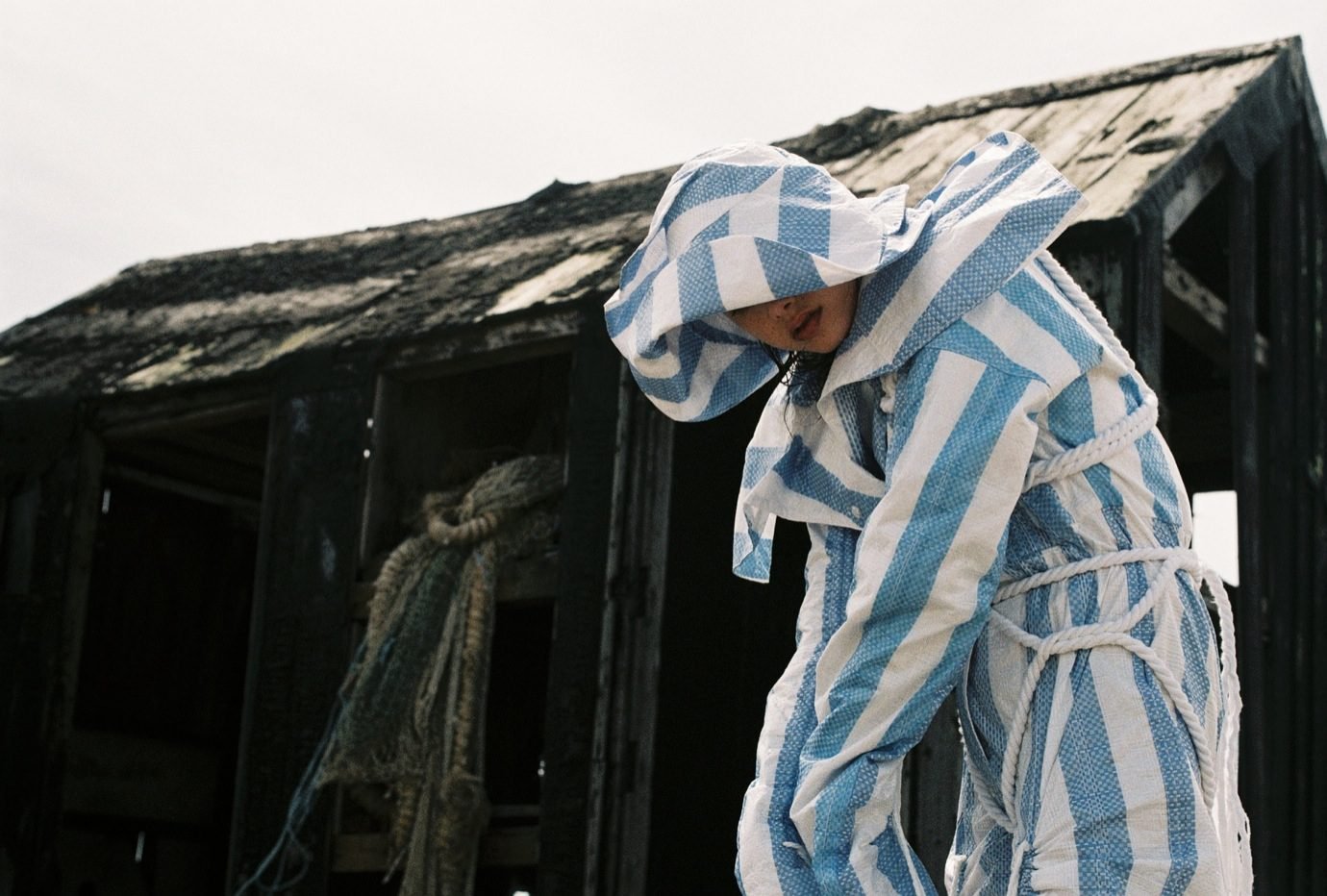Focussing on adapting the work of Balenciaga to their own taste, the students preserved the Spanish designer’s technicality through purposeful design: fluorescents and uniforms, comfort tailoring, with the modern pilgrimage in mind. The result, the cult ‘sac’ shape is reimagined from a paratrooper’s parachute. This translation of loose fit on highly structured couture creates targeted tailoring from the inside out. Prints, “three layers deep,” harnessing to elevate the silhouette and ease of movement. Modern adaptations of Balenciaga wearer narratives, a Bunny Mellon of the 21st Century. Despite grandiose shapes, the clothes are proven to serve practicality with discreteness, one with a balaclava attached for the potential socialite client who demands privacy.
Balenciaga Revival!
Behind the scenes of Transmissions: Heritage and New Creation
As we roll into the new season, Transmissions, Heritage and New Creation draws to a close after a long summer run. It is a perfect time to view the internationally influenced creations displayed in the exhibition, crafted by the young students, winners of the revival project.
In the Basque region of Getaria, Spain, guided through the archives of the Balenciaga Museum by Igor, the in- house-curator, six fashion schools took part in the Transmissions education and creation showcase, aiming to revive the craftsmanship of Balenciaga through their own creations. The initiative turned exhibition has, according to the coordinator, Elisa Palomino, “educated a broad segment of the fashion university population.”
The challenge: how to preserve the legacy of Balenciaga, when clientele ideals have changed so much between two centuries? Or, in the case of the students who are leveraging Balenciaga’s influence into their own world: what is happening when the body is not there anymore?
“My research for the Balenciaga project started with the Spanish photographer José Ortiz Echagüe. I loved the photograph of the hooded and costumed penitents on pilgrimage and started to research the history of pilgrimage in Spain.
I then watched a 1960s French movie called Milky Way. It showed comedically the journey of two men on pilgrimage, questioning miracles and God. That lead me to watch the movie called The Way (2010), which depicted how pilgrimage could mean different things to different people. Nowadays, it is also used to meet people, lose weight, discover oneself, or even as a sporting event. I started to look at several pilgrimage paintings and the Japanese painter called Makoto Fujimura caught my eye. I was very interested in how he uses Japanese square gold papers to depict the stained glass of the chapel. I then started to make collages. Aside from the jacket, everything was white fabric at first and I dyed or sublimated it to add up the prints. In order to recreate the crackle texture in Makoto Fujimura’s painting, I experimented using wax and flour. My final garment was a combination of a hiking outfit from the movie The Way and the traditional Balenciaga dress which I thought could look like a backpack with my prints. I had seven different prints to combine for the backpack part and each print had more than three layers. I prefer to do it all by hand rather than relying on digital printing. Since it was a mixture of sportswear, I wanted my garment to have a bit of functionality, so, I decided to attach two small pockets on the knees. Don’t we always need pockets?”
“We all have an intimate relationship with what we wear. When we are wearing our garments, they are on our skin. We are more ephemeral than the clothes in a way. I really love the idea of a garment surviving us, we saw a huge collection of clothes that used to be worn by Bunny Mellon. I have been really inspired by the gesture with the archive pieces. What is happening when the body is not there anymore? Passage is the story of traces of the body, relationship with the garment, relationship between an archivist and people. So I created this big coat which acts as a frame.”
“This project is about Mr Balenciaga and his friend Mrs Rachel Mellon, who was an excellent gardener because she designed and built many wonderful gardens, which can be seen as a miniature of women’s self-construction.
But after reading lots of articles about her, I found people never stop talking about the males in her life. “Successful grandfather, father, and husband.” It seemed like all her achievements were based on them, and that made me feel like women still couldn’t get rid of the patriarchy even after many feminist revolts. In this male-centred society, to some extent the item “female” is only a sex physiologically, not intellectually or spiritually, situating the female body as the site of the ideological struggle, a site of physically realized domination, which degrades, and subjugates women.
I tried to figure out how women live in the “defined” position as an object in the patriarchal society, and their persistence and pursuit of self-construction as a subject.
I researched many classical works of Balenciaga to understand the silhouette and pattern-cutting skills from his works. I then designed and made this one piece: a seam cape with a hat in blueprint colour to show respect to Balenciaga, who had been in the pursuit of purity & volume all his life.”
“My starting point was a black cape that looked a lot like a clerical vest, it had no prints or embellishments on it. This led me to research painters like Zurbarán and Vanitas with a really rich black background.
Drawing did not really do the job for me in this project because whenever I started a design it became too adorned and decorated. Shape was what I wanted to focus on. So I went to work on the stand and used cardboard instead of fabric or paper to force myself to create a dramatic and sculptural silhouette. After that, I had many fittings on my model as I did not use any blocks as a base/guideline but draped everything on the stand.
I based my research on his technically innovative solutions to tailoring, and the inspiration he drew from Catholicism. Coming from a Catholic background myself, I decided to use his general fascination for the rituals of Catholicism and give my personal point of view. I looked at some of his favourite painters (Zurbarán for example) and decided to compare & contrast them with contemporary artists like Hermann Nitsch, that deal with religion in a more critical sense.
There were two pieces that drew my attention specifically. First, a tailored Jacket. Its shape was created through a belt that was attached to the inside of the Jacket and forced it to sit and move a certain way when worn, rather than the seams and cutting on the outside. This tailoring from both the inside and the outside of the garment was pretty mind-blowing for me and I used the same technique in my Jacket later on.
The second piece was a dress or a skirt underneath a Tunic dress. It was not cut but folded to avoid any loss of the precious material. I used this idea to create the dress worn underneath my Jacket. The whole length of heavy silk/viscose crepe was folded to create a triangle that was held together by two seams. All that was added to make it a dress was two shoulder straps, one hook and three pop buttons in the back! I was fascinated by his most minimal looks and how much he considered the woman, the wearer for his creations. He freed women physically in a time where Dior brought back the corset.”
“I understood Balenciaga’s work as one of adaptation to the client and to the contemporary lifestyle. I tried to adapt to how women live today, basing myself around Bunny Mellon’s lifestyle and imagining what this woman would be like if she lived now. She was passionate about her gardens, one of the first people to own a private jet, very discreet despite being a socialite. I tried to transpose those aspects of her life to the modern day. I created a headpiece based around the pillbox hat that would cover the face like a balaclava to protect her privacy; a body suit and coat inspired by cycling gear; all the sewing lines are placed to guarantee comfort when moving, walking, sitting. I also designed a textile for the coat and a “cactus on wheels” inspired by her passion for botanics and to allow her to always take her garden with her, even when travelling, as a pet plant.”
“Often, my process begins with an object. Something that I can consider and be inspired by to ultimately transform into the final product. For this project, it started with one of the most amazing things I had ever found – a British military parachute from 1968 in a fluorescent shade of Mountbatten pink. I had found it on eBay from a military surplus site and couldn’t believe the luck I had in finding something as unique.
A little backstory: general Mountbatten was a member of the British military that pioneered the use of pink on battleships and other military supplies as a means of camouflage. The idea was that in the gulf, pink was the colour of the sky at dawn and dusk so equipment would blend in with the horizon. While the parachute was an amazing inspiration; it didn’t lead me far by means of developing a silhouette. I wanted to explore the idea of a paratrooper further because the references I was looking at had amazing detail in the harnessing and fastening of the suits they would wear.
I sourced a baby carrier from gumtree that had similar harnessing. By deconstructing this I developed a train and back apparatus that fastened to the dress the way a backpack would, and was meant to emulate the seams and drape of the original parachute as well as the ‘sac’ or semi-fitted silhouette that Balenciaga himself pioneered; focusing on the back and the relaxed fit of extra volume at the centre back. I realized that the curved back given by the baby carrier was the perfect emulation of this traditional couture line. The entire thing was then embroidered with nearly 700 hot pink coque feathers as an ode to Balenciaga’s feather work.”
“Rachel ‘Bunny’ Mellon: As an American horticulturist, gardener, philanthropist and art collector, she was predominantly known as the wife of Paul Mellon, the greatest American philanthropist. In this project, I played with her facade of grandeur – as the perception of her reality to outsiders was very obscured.
The research was developed through experimentation with cloth, light and wind, in order to observe the bold line between air and mass. By juxtaposing the inside and out; the creasing and pressing; the symmetry and asymmetry; the revealing and concealing, the project explains her desire for privacy but necessity for the spotlight. Her quote, “a garden is the past, present and future in one” influenced my obsession with playing and sculpting the fabric using a tailor ironing technique and hand sewing. The woman created encompasses the power you can maintain between the air and the body, the everyday boundaries – touch and movement – powers which connect humans to society.”
ANTHONY WATTS
“For the project, I wanted to create a contemporary narrative based around Bunny Mellon, one of Balenciaga’s main clients. Mellon was a well-known socialite of her time but was also very private. My research was focused on paparazzi shots of modern socialites and celebrities who are trying to disguise their identity. I created a monogram of the ‘Getty Images’ logo which is printed on the fabric.”
The Transmissions education and creation showcase was held between 14th June 2018- 2nd September 2018.
The 150 professors and students who were involved were from the following schools: Central Saint Martins (UAL, London, England), The Royal Danish Academy of Fine Arts (Copenhagen, Denmark), Iceland Academy of the Arts (Reykjavik, Iceland), Shenkar College of Engineering, Design and Art (Ramat Gan, Israel), Seika Kyoto University (Kyoto, Japan) and Parsons The New School of Design (New York, USA).
Special thanks to: Elisa Palomino, Jone de Felipe, Zuriñe Abasolo and the Central Saint Martins Fashion Print and Womenswear students who took part.

